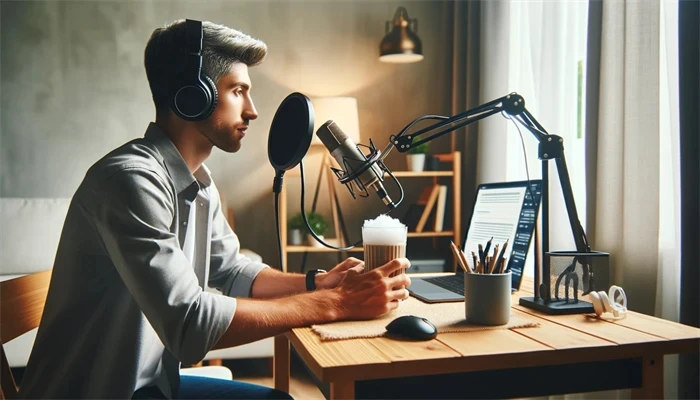Creating realistic portraits requires a combination of technical skills, observation, and practice. Whether you are an aspiring artist or just enjoy doodling, these tips will help you enhance your portrait drawing abilities and bring your subjects to life.

1. Begin with a Reference Image
A reference image is crucial when drawing realistic portraits. Choose a high-quality photograph that captures the subject’s unique features. It should have good lighting and clear details for you to work with. Print the image or have it on a digital device for easy access.
2. Understand the Basics of Proportions
Learning about facial proportions is essential. Study the golden ratio and how it applies to the face. Understand the relationship between the eyes, nose, mouth, and ears. Pay attention to the angles and distances between these features. This understanding will help you accurately depict the subject’s likeness.
3. Sketch Lightly and Build Layers
Start with a light sketch to establish the general shapes and placement of features. Gradually add more details and refine the drawing as you go. Building layers helps create depth and texture, contributing to a more realistic representation. Use an eraser to correct any mistakes and make adjustments along the way.
4. Observe Shadows and Highlights
Understanding how light interacts with the face is crucial for creating a realistic portrait. Observe and identify the areas of shadows and highlights on the reference image. These nuances bring depth, volume, and dimension to your drawing. Pay close attention to the subtle variations in tone.
5. Focus on the Eyes
The eyes are often considered the most important feature of a portrait. Spend extra time capturing their unique characteristics. Pay attention to details such as the iris, reflections, and eyelashes. Eyes convey emotions, so capturing them with accuracy will make your portrait more expressive.
6. Study Facial Features
Take time to study and understand the structure of each facial feature individually. Practice drawing eyes, noses, ears, mouths, and hair separately, paying attention to their unique shapes and textures. This exploration will help you achieve better results when combining them into a complete portrait.
7. Use the Right Materials
The right materials can make a significant difference in achieving realistic portraits. Invest in high-quality pencils with various hardness levels to create different shades. Use smooth paper with good tooth that can hold layers of graphite or colored pencils. Experiment with different erasers to achieve desired effects.
8. Practice Value and Shading Techniques
Mastering shading techniques is crucial for creating depth and volume in a realistic portrait. Practice blending, cross-hatching, and stippling to create different textures and values. Experiment with different pencil pressures to achieve lighter or darker tones. Continuously practicing these techniques will enhance your drawing skills.
9. Focus on Details
Pay close attention to the smallest details in your reference image. Notice the subtle variations in skin texture, wrinkles, and hair strands. Adding these intricate details can make a significant difference in the overall realism of your drawing.
10. Take Breaks and Gain Perspective
Drawing for extended periods can lead to fatigue, causing you to lose objectivity. Take short breaks to rest your eyes and gain perspective. Step back from your drawing and observe it from a distance or through a mirror. This will help you identify any inaccuracies or areas that need improvement.
11. Seek Feedback and Learn from Others
Share your portraits with others and seek constructive feedback. Join art communities or classes where you can learn from experienced artists. Engaging with fellow artists will provide valuable insights, tips, and inspiration to improve your drawing skills.
12. Utilize Digital Tools and Software
In today’s digital age, there are numerous software programs and tools available for creating realistic portraits. Programs like Photoshop and Procreate offer a wide range of brushes and editing options that can enhance your artwork. Explore these tools to find the ones that best suit your style and workflow.
13. Explore Different Styles
While realism is a popular approach, don’t be afraid to explore different styles and techniques. Experiment with impressionism, cubism, or abstract approaches to add your unique artistic touch to the portraits. Venturing outside your comfort zone can lead to new discoveries and creative growth.
14. Embrace Challenges and Learn from Mistakes
Creating realistic portraits is a challenging endeavor that requires patience and perseverance. Embrace challenges and view each drawing as an opportunity to learn and improve. Don’t be discouraged by mistakes; instead, use them as stepping stones towards mastering the art of portraiture.
15. Practice, Practice, Practice
Lastly, practice consistently. The key to mastering any skill is regular practice. Set aside dedicated time each day or week to draw portraits. Over time, you will notice significant improvements in your abilities and develop your unique style.
Frequently Asked Questions:
1. Can I draw realistic portraits without formal training?
Yes, anyone can learn to draw realistic portraits with or without formal training. However, formal training can provide you with guidance, techniques, and valuable feedback to improve your skills faster.
2. How long does it take to become proficient in drawing realistic portraits?
Becoming proficient in drawing realistic portraits varies from person to person. It depends on the amount of time and effort you dedicate to practice. Consistent practice for months or even years can significantly improve your abilities.
3. What are the best tools for digital portrait drawing?
The best tools for digital portrait drawing depend on personal preference and the software you use. Popular options include drawing tablets such as Wacom Intuos and iPad Pro with a stylus like Apple Pencil. Research and read reviews to find the tools that align with your needs.
References:
Smith, K. (2020). Portrait Drawing Techniques. Retrieved from https://www.liveabout.com/portrait-drawing-techniques-1122790
Dobie, J. (2021). How to Draw Portraits: 15 Tips for Beginners. Retrieved from https://www.artiscreation.com/portrait_tips.html
Watson, J. (2021). How to Draw a Lifelike Portrait: From Start to Finish. Retrieved from https://www.creativebloq.com/how-to/draw-a-portrait-from-life-to-photos


